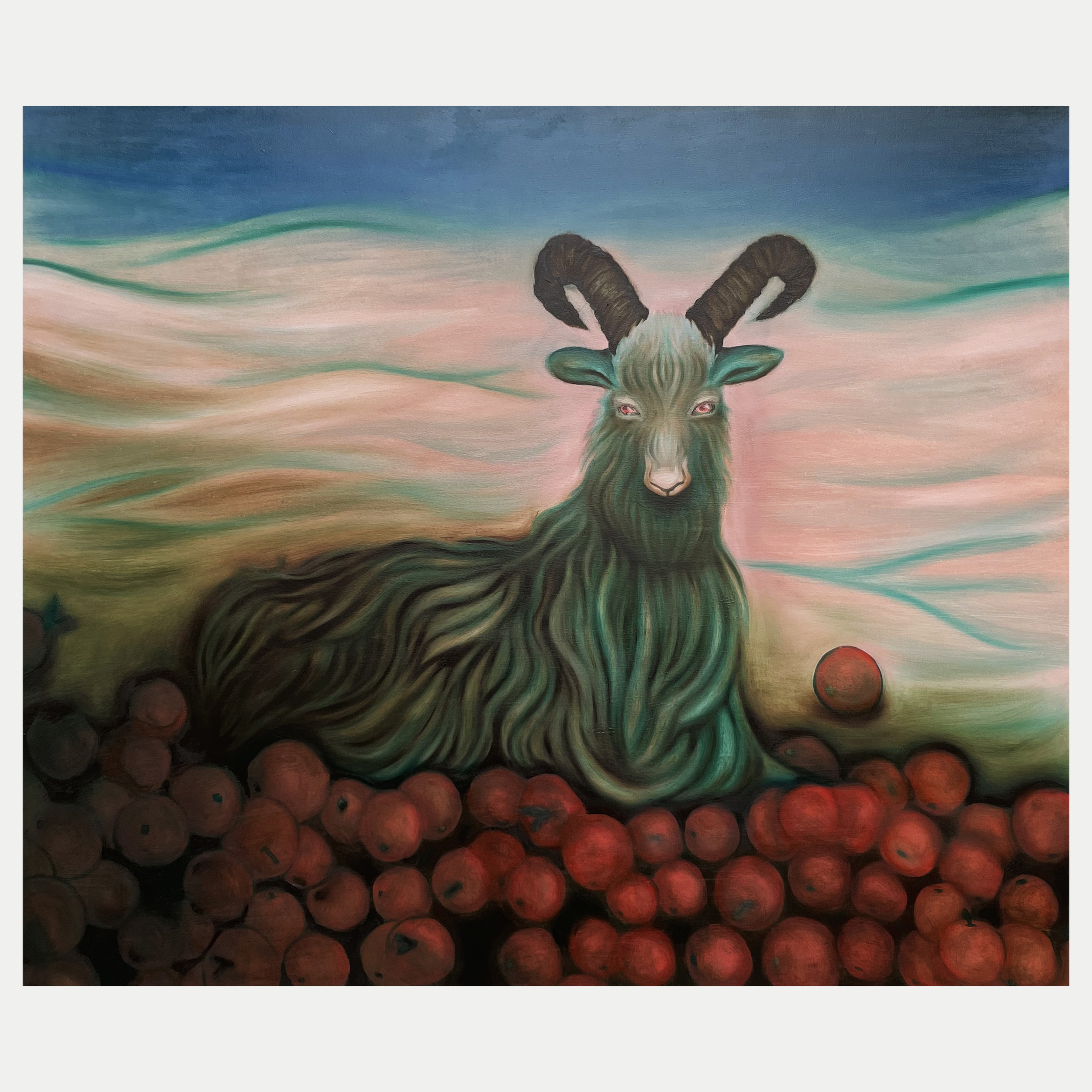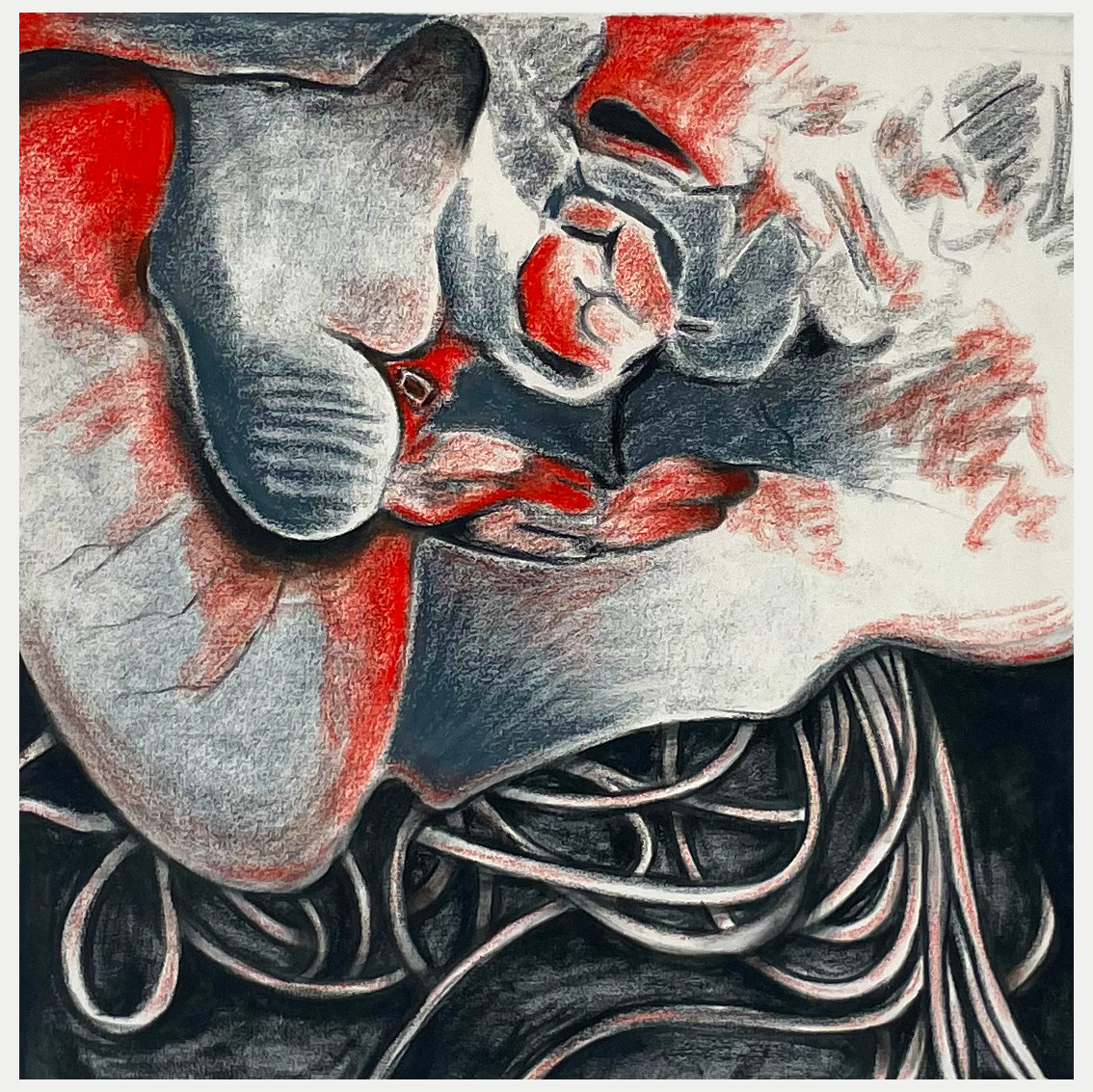Anna Schaumberger
Anna Schaumberger, born in 1999 in Munich, has been deeply engaged with figurative representation since childhood—particularly within the inspiring setting of her grandfather’s greenhouse.
After completing her training in communication design at the Designschule München, she began studying at the Academy of Fine Arts in 2022, in the class of Professor Hildebrandt.
Early in her studies, Schaumberger focused on skin and materiality, sparking a fascination with biological and organic processes. She is drawn to the aesthetics of the grotesque and repulsive, influenced by horror films from directors such as Ari Aster and Robert Eggers, as well as by the work of Dutch artist Lizan Freijsen, whose carpets and room-sized installations are based on microscopic imagery of mold and bacteria. She is particularly captivated by black mold—a substance that embodies both beauty and severity, despite its negative associations.
Schaumberger’s work explores the intersection of aesthetics and disgust. Her dog paintings reflect on themes such as parasitism, control, and the loss of control—grappling with the darker aspects of human nature and interpersonal relationships. The anthropomorphic qualities of the dogs are entangled with the violence of domination. Over time, her imagery has evolved to include more playful interpretations, touching on ideas of friendship and warmth.
Parasitism also appears in her more abstract works, where forms twist and slither across the canvas. Her creative process typically begins with research into biological phenomena, collecting mood boards, and occasionally sketching favored shapes and motifs. She then works directly onto the surface—without preparatory drawings—allowing the painting to unfold intuitively during the process.
Her materials include oil, acrylic, ink, wax, texture paste, and tempera on cotton or wood supports, often combining multiple media within a single piece.
Browse available works:
Find out more:
Schaumberger’s use of the grotesque is manifested in different motives. Confronting the viewer with disgust more or less directly at times and masking her motives in diverse forms of aesthetics. The dog paintings from her first diploma at the Academy of Arts in Munich are a great example of her talent to draw in viewers. Making them reflect on the underlying mechanisms more attentively.
Studio view during first diploma
Academy of Arts, Munich
2024
Work detail “Ovipositor”
textured paste and oil on canvas
2024
Artist interview:
How would you describe your artistic practice?
I hardly ever sketch in analogue and start painting directly on my primed canvas when my gut feeling tells me that today is a good day to produce. That's why I often have longer phases of inspiration in between, during which I do a lot of research and create digital moods in InDesign, print them out and stick them on my wall. I always go straight to the canvas and let the picture develop under my brushstrokes.
I often paint over the pictures at the end, as they are always transferred directly from my head to the final medium and only then do I decide whether I like the picture or not.
What concepts appear consistently in your practice?
Tue Greenford once told us that he thinks students should engage more with their environment and the small things around to get out of the academy bubble. Since then, I've been very interested in the microscopic. Particularly in black mould, which for me represents the perfect balance of aesthetics and disgust.
Diseases and parasites often appear in my work, in combination with dogs that are directly infested or can be seen abstractly and on their own as writhing shapes. For me, it has a lot to do with control and loss of control. Control is forcibly relinquished and another living being takes it. One functions as a shell.
My works’ names often use Latin medical terms for the symptoms that an infestation triggers in the host.
What techniques or materials do you frequently use?
Originally I worked a lot with latex, which I removed after application. In the meantime, the majority of my work is applied in several glazed layers of oil with a brush on canvas or in tempera. Since my intermediate diploma I have also been working with airbrush on structure paste. At the moment I am pouring wax onto a wooden surface, which I then work on with a special iron.






Anna Schaumberger